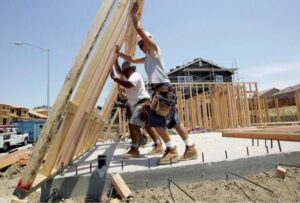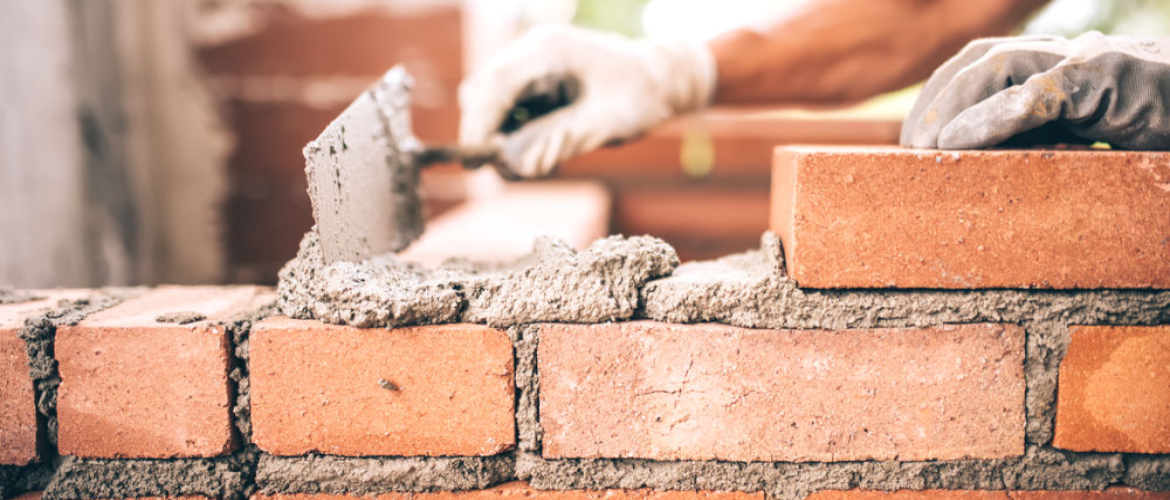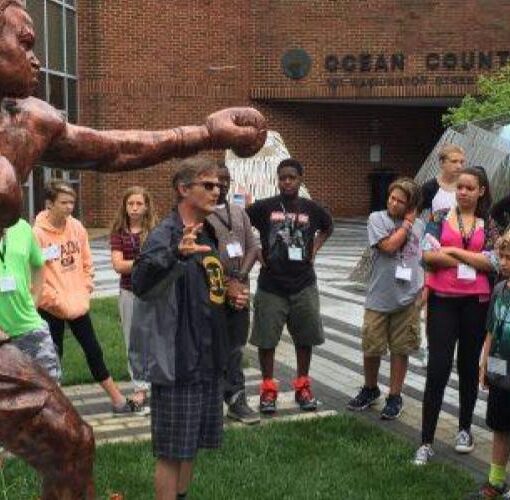The Perfect Storm
Every summer, I run into former colleagues and students at various Jersey shore hot spots. You can tell we try to avoid talking shop, but this year, each conversation eventually revealed the same observation: While we believed this past year would be (had to be) easier than the previous, we were clearly wrong.
It wasn’t for lack of trying. On top of the COVID tidal wave, a perfect storm of conditions kept us in emergency response status. The pandemic sparked economic conditions that created staffing and supply shortages in schools already operating below adequacy, compounded by ongoing state aid cutbacks.
Teacher job satisfaction reached a new low (Steiner & Woo, 2021). After a 28-month test of endurance, thousands of experienced teachers have concluded that the rewards compared to the responsibilities and energy required have made the job no longer worth it, deciding to call it a day. Enrollment in teacher-prep programs is dropping after already declining by a third over the past decade, leading to major problems replacing lost staff.
Traditional strategies and efforts no longer produce the same results. Many students are disengaged, disaffected, and dropping out, resulting not only in failures but an unprecedented mental health crisis. Technology seemed like a lifeline for staying connected, but now we know it has also contributed to anxiety and digital fatigue. And the good feelings school communities expressed about first year efforts have mostly faded, worn down by disaster fatigue, new challenges, and unrealistic expectations. (I even experience this at the college level.)
We are post-traumatic stressed. Many find themselves in a stressful and even painful place. The road ahead is cluttered with debris and hard to see while being in a rut.
No one can continue to operate in emergency mode indefinitely.
Nearly two years ago, I shared some of what we learned in the first few months of emergency operations. I might have better put it “what we discovered,” because learning implies that we are able to use knowledge. Most haven’t found themselves with the energy, mental space, and resources to apply new information to the present reality. That requires perspective, difficult to have when you are unable to change your position.
Disasters (natural or human-made) are part of our history, and recovery from them takes many forms. Those who have lived through catastrophe say the hardest work usually comes in the months well afterward. The reframing and rebuilding is both physical and psychological.
The Road to Recovery Through Repurposing
 It’s pretty clear that asking people to “simply” do more right now is counterproductive. Doing less and using what we already have seems more practical and possible. Lucky for all of us, collectively, educators possess all the necessary skills, experience, and creativity to get us through.
It’s pretty clear that asking people to “simply” do more right now is counterproductive. Doing less and using what we already have seems more practical and possible. Lucky for all of us, collectively, educators possess all the necessary skills, experience, and creativity to get us through.
While there are many issues in schools to address, the urgent need is to get students back to being good students.
To meet that goal, as with New Orleans’ new levee system, we’ll have to use our tools to construct something different this time around. The six steps below are framed in emergency management terms while representing an affirmation of what teachers already do well.
1. Re-establish lines of communication. In an emergency, communication is disrupted and the infrastructure for it is often damaged. As a result, leaders may move ahead without adequate feedback. Following a large scale emergency, as Heinemann (2017) puts it,
“the most important thing is not to treat people like victims. [Those who] have been hit… are in a state of shock and will probably need a lot of assistance. But they are the ones who have been affected, and as such, they should be a key part of the decisions and reconstruction and rebuilding processes.”
Roles and responsibilities among teachers, administrators, parents, and the students themselves must be clearly articulated, particularly what to expect from each other. For example, what student supports are available, and what expectations do we have of students to get back to work? Educator expertise with home-school communication is the key to regaining trust, collaboration, and the exchange of information.
2. Identify and address the most immediate needs. Disaster sites often rely on triage– those likely to be saved get first attention. Schools can’t pick and choose who gets help, but they can differentiate support based on identified needs. To focus resources where they will have the most impact, it will be wise to put aside practices we agree aren’t working. For example, we can decide to prioritize content, streamline work submission processes, diversify work products, devise more manageable schedules, and simplify grading. These can be reevaluated once we see improvements. This also may not be the best time to introduce anything different (ex. a new learning management system), no matter how well intended.
3. Make the most of available resources. Those impacted by a disaster may be able to access emergency management, town government, and FEMA, but it’s often the community that is the first and best source of support. Picture dozens of Amish in their tucked-in dress shirts and lace-hemmed dresses erecting a barn together. For educators, that community of builders is our colleagues, professional networks, district leaders, and organizational partners. To resurrect our schools, we’ll need to coordinate this web of resources so no student (or peer) falls through the cracks.
4. Validate feelings! FEMA’s guide to recovery actually refers to this. “Acknowledging your feelings [and] focusing on your strengths and abilities… helps you recover.” (FEMA, 2021) Student pushback or lethargy isn’t personal. As bad as adults may have it, students have fewer tools, resources, and experience to manage their feelings. Teachers are creating lessons to help everyone articulate and process emotions–sadness, confusion, frustration, anger, relief– and determine actions together that can improve our mental health.
5. Objectively assess the new reality. Global warming is forcing communities around the world to reframe how we live and work in areas increasingly affected by extreme weather. This tragic fact is creating new short term realities for many (How quickly can we restore power after a storm?) as well as long term ones (Should we rebuild the same structures in a flood zone?). Schools managed the new short term realities of technology, access, and funding early in the pandemic. We’re still tackling the bigger challenges of staffing, equity gaps, and mental health. These are all complex and interconnected factors with no “best practices” to call on (McSwiggins, 2010), but education has always been complicated. It has forged in its practitioners aptitudes for generating, analyzing, and making informed decisions based on data, creating policies and procedures to manage complexity, and assessing who and what are most at risk in the future.
 6. Rebuild with an eye towards the future. Using the results of our risk assessment, we can engage in “proactive resilience” (Jackson & Ferris, 2015), a mindset geared towards mitigating future damage. Resilient organizations are more open, collaborative, flexible, and responsive. They consider every stakeholder and possible situation. Educators and researchers have validated approaches that yield those results in our classrooms, like learning approaches that are active (student-directed), authentic (connected), multisensory, equitable, and differentiated. Another factor for which there is less data but plenty of intuition and experience supporting its effectiveness: fun and joy in our classrooms. We need that more than ever.
6. Rebuild with an eye towards the future. Using the results of our risk assessment, we can engage in “proactive resilience” (Jackson & Ferris, 2015), a mindset geared towards mitigating future damage. Resilient organizations are more open, collaborative, flexible, and responsive. They consider every stakeholder and possible situation. Educators and researchers have validated approaches that yield those results in our classrooms, like learning approaches that are active (student-directed), authentic (connected), multisensory, equitable, and differentiated. Another factor for which there is less data but plenty of intuition and experience supporting its effectiveness: fun and joy in our classrooms. We need that more than ever.
Responsible teachers and parents will do what we always do: help children understand, learn, and adapt to where we are. But first, we have to get there ourselves. I have always told my students, however you were before, you have a chance to be different today. I try to follow my own advice.
I wish every family and educator a fresh and well-prepared start for this new year– and every year beyond it, since who knows what time will bring?
⚙ Dr. Marc
August 2022
If you believe that someone in your professional or personal network would benefit from reading and engaging in topics like this, please forward them this email. I only ever use email contacts to provide information such as this post, and will never share contacts with any other person or organization. To unsubscribe, reply with Unsubscribe.
©2022 Marc Natanagara, Ed.D. All rights reserved. Reprinted with permission.
Articles, services, and other resources accessible at authenticlearningllc.com
When duplicating this post in any form, please be sure to include the attribution in italics above.
When duplicating an infographic, be sure to include any attributions within the graphic.
Image Sources
Image of bricklayer from https://guardian.ng/property/operatives-seek-local-options-to-curb-importation-of-building-materials/
Image of sculptor from https://www.bbc.co.uk/learningenglish/chinese/features/take-away-english/ep-151026
Image of homebuilders from https://fortune.com/2016/09/06/housing-construction-worker-shortage/
References
Heinemann, A. (September 21, 2017). How cities can recover from disasters. The Conversation. https://theconversation.com/qanda-how-cities-can-recover-from-natural-disasters-84409
FEMA (February 19, 2021). Recovering from disaster. https://www.ready.gov/recovering-disaster
Jackson, S. & Ferris, T. (2015). Proactive and Reactive Resilience: A Comparison of Perspectives. INCOSE Insight: 18(7). https://www.researchgate.net/publication/318814741_Proactive_and_Reactive_Resilience_A_Comparison_of_Perspectives
McSwiggan, G. (January 6, 2010). Problem: disasters. Solution: resiliency and recovery. https://www.uschamberfoundation.org/disasters/advancing-resilience-today-anticipating-tomorrow-reflections-12th-annual-building
Steiner, E. & Woo, A. (2021). Job-related stress threatens the teacher supply: Key findings from the 2021 state of the U.S. teacher survey. https://www.rand.org/pubs/research_reports/RRA1108-1.html
Resources
https://www.brookings.edu/research/beyond-reopening-schools-how-education-can-emerge-stronger-than-before-covid-19/ (9/8/20)
https://www2.ed.gov/about/offices/list/ocr/docs/20210608-impacts-of-covid19.pdf (6/9/21)
https://www.edutopia.org/article/how-school-leaders-can-rebalance-teachers-job-demands-and-resources (7/7/22)
https://www.nea.org/advocating-for-change/new-from-nea/how-pandemic-will-change-future-schools (4/15/21)
https://www.rand.org/pubs/research_reports/RRA1108-1.html (2021)
https://www.roadsbridges.com/sustainable-transportation/article/10652927/how-to-develop-a-proactive-resiliency-framework-in-your-planning-programs-or-organizational-approach (2020)





